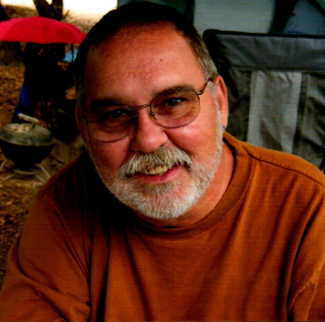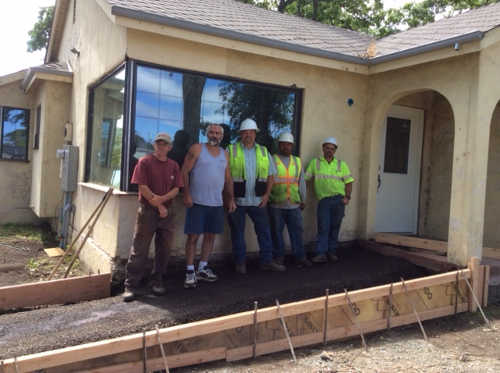NORTHERN CALIFORNIA – Fifteen branches of federal, state, and local government have agreed to work together on planning and projects in the Yolo Bypass and Cache Slough region in order to restore wildlife habitat, better manage floods, preserve farmland, improve water supply and quality, and provide economic development and recreation.
This partnership, formalized in a memorandum of understanding signed this month, will provide strategic input on the implementation of projects that include strengthening and setting back levees, removing barriers to fish passage, sustaining agricultural operations, and making it easier for salmon to rear on the Sacramento River floodplain.
The MOU helps coordinate and synchronize efforts of 15 separate federal, state and local agencies in the Yolo Bypass, a 92-square-mile swath of farmland and wetlands that serves as a flood safety valve to protect the cities of Davis, Woodland, West Sacramento, and Sacramento, as well as important agricultural lands and several small communities.
Designed in the early 1900s by the U.S. Army Corps of Engineers in collaboration with the State of California, the 41-mile-long Yolo Bypass can carry four times the flow of the Sacramento River.
Water from Clear Lake flows through Cache Creek and into the Yolo Bypass.
The Sacramento River once seasonally spilled across much of the Sacramento Valley, creating rich wildlife habitat, recharging groundwater, and providing abundant food for young fish.
Today the river is bound by levees, but the Yolo Bypass still operates most winters as a floodplain, carrying floodwaters from the river in a wide channel that stretches from Knights Landing to Rio Vista.
The bypass safely deposits as much as half a million cubic feet per second of flow into the mouth of the Sacramento River in the western Delta.
Besides helping to protect cities and rural communities from dangerously high flood flows, the Yolo Bypass supports abundant waterfowl and fish and offers good opportunities for habitat restoration.
Most of the bypass is privately owned and farmed, and the state holds easements that allow for regular flooding of the land. The state-owned Yolo Bypass Wildlife Area between Davis and Sacramento is popular with birdwatchers, hunters and educational groups.
Efforts are underway in the bypass to better mimic the river’s natural floodplains by allowing more water on the bypass for longer periods of time.
Studies show that the shallow flooding of the bypass boosts production of food for salmon and other native fish. Other potential efforts include enhancing seasonal floodplain habitat, improving levees for regional flood management, and removing barriers to help adult and juvenile fish return from the floodplain to the river.
“The Yolo Bypass was built generations ago primarily to provide public safety protection to the greater Sacramento area,” said California Natural Resources Secretary John Laird. “Over time, there has been a greater appreciation for its role in meeting other needs as well. Working together with everyone’s interests in mind, this agreement can move the role of the bypass to the next level – for flood protection, wildlife habitat and the agricultural economy."
“The intent of this MOU truly echoes the US Army Corps of Engineers’ focus on Integrated Water Resource Management,” said Sacramento District Command Col. Michael Farrell. “We can only achieve success by considering the plans and viewpoints of all other stakeholders in the watershed, and look forward to further collaboration on a long-term vision for the Yolo Bypass.”
“We are very pleased to take part in the signing of this agreement. It affirms a commitment to collaboration and aligns efforts across agencies to achieve outcomes that will help us improve flood conveyance, economic development, habitat, water quality and more in the Yolo Bypass and Cache Slough region,” said Bureau of Reclamation Mid-Pacific Regional Director David G. Murillo.
“Local agencies have been working hard to coordinate our efforts in the Yolo Bypass and Cache Slough region for a long time,” said Yolo County Supervisor Jim Provenza. “We welcome this opportunity to grow the conversation by working more closely with our state and federal agency partners.”
“This is exactly the kind of interagency partnership that is necessary to move forward in achieving flood protection, local economic sustainability, and the State’s coequal goals of habitat restoration and water supply reliability,” said Randy Fiorini, chair of the Delta Stewardship Council.
The parties to the non-binding, 10-year MOU recognize one another’s missions and authorizations and commit to greater collaboration and communication regarding federal, state and local actions – two critical ingredients for success in a landscape that provides so many benefits.
The signatories are the U.S. Bureau of Reclamation, National Marine Fisheries Service, U.S. Army Corps of Engineers, U.S. Fish and Wildlife Service, California Natural Resources Agency, California Department of Water Resources, California Department of Fish and Wildlife, Central Valley Flood Protection Board, State Water Resources Control Board, Central Valley Regional Water Quality Control Board, Yolo County, Solano County, Sacramento Area Flood Control Agency, Solano County Water Agency and Reclamation District No. 2068.
A copy of the MOU is available at http://resources.ca.gov/docs/160510-Memorandum_of_Understanding.pdf .

















